I apologize for my absence over the past few months. The biggest fan of this newsletter passed away, and I needed some time. My father died on his birthday after hosting what we retrospectively realized was his own Celebration of Life in his hospital room with family and friends. He died happy and loved, which is all any of us could wish for. Thank you for your patience as I heal. In his honor, today I’m writing about his favorite nature subject – trees.
Earlier this winter, I finally found time to visit The Mountain, a Unitarian Universalist retreat near Highlands, N.C. that the Old Growth Forest Network states has some of the oldest white oak specimens in America. The retreat is located on top of Little Scaly Mountain, a zig-zaggy climb of a road up to a beautiful view to the east. There’s a nice viewing platform and a series of trails that wind around the mountain through a fairly nondescript forest.
As we wandered through the woods, the most distinctive feature was the unimpressive size of the trees. I expect ancient trees to be enormous, huge at the base, with far-reaching crowns spreading outward like kings of the forest. These trees, however, were smaller even than the tulip poplar trees near my house, narrow in diameter, with somewhat gnarled branches. If I’d not read about these trees in the Forest Network website, I’d have no idea they were ancient in tree terms. It made me wonder:
Why are these old trees so small?
As a comparison, here’s a picture of the Wye Oak of Maryland, by many to be considered the oldest known white oak in the country before it fell in a storm in 2002:
The Wye Oak, in the village of Wye Mills, dates from the 1500s and was 31 feet, 8 inches in circumference at its base when it fell. That enormous tree is almost the same exact age as the one I’m standing beside here:
We know this because Clemson University dendrologists have taken core samples of many of the trees to count the rings. They have incredibly dense, tight rings accumulated over hundreds of years.
The forest is located on Little Scaly Mountain, not to be confused with Big Scaly just off to the west. Why scaly? It has to do with the rock outcroppings everywhere.

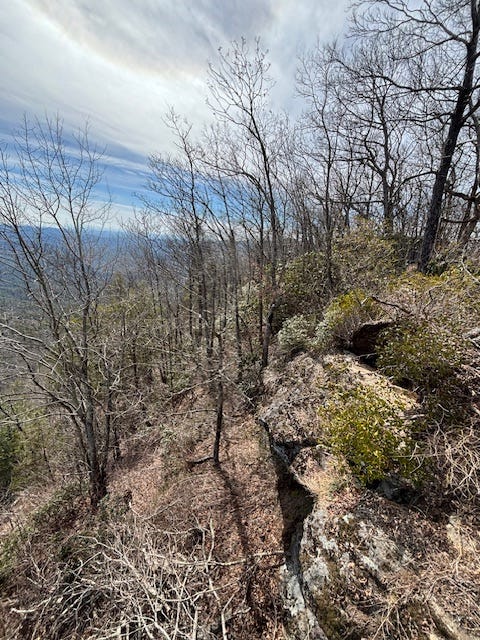
From a distance, both mountains appear to be covered with rocky scales, like slightly mangy sleeping dragons. It’s this rockiness, and the fact that the mountaintop is exposed to continuous winds, that has stunted the growth of these trees. Charles Wharton, author of “The Natural Environments of Georgia” says The Mountain: "is an excellent example of a rock bald with an unusual forest of ancient, 'krummholz' (wind-sheared) white oak, along with evergreen heath. This may be the oldest white oak stand in the world. Many of the trees have been dated between 400 and 500 years of age.”
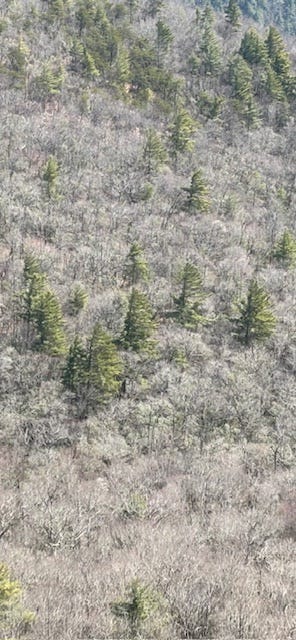
The combination of nutrient-poor rocky soil and strong winds means the trees don’t grow huge, like other white oaks in more agreeable locations. But this area is also considered to be a temperate rainforest, with average rainfall over 100 inches each year, which means drought is not an adverse factor and likely contributes to the health of these trees.
In fact, the Highlands area of North Carolina has a number of impressive, old tree specimens likely due the high elevation (over 4,000 feet), cool summer temperatures, sandy soil, and high rainfall. These include the Bob Padgett poplar tree (127 feet tall and over 400 years old) and an Eastern Hemlock dating to 1761 in the W.C. Coker Old Growth Forest near Highlands. There’s supposedly a 21-foot tall blueberry bush on private property nearby along with national champion winterberry and ash trees.
If you’re in the area and would like to visit the old-growth forest on The Mountain, just call ahead to make sure the retreat is open to visitors and not hosting a large gathering. Also, be sure to check out the Old Growth Forest Network to see if there’s an ancient forest near you. These are beautiful places to enjoy some land snorkeling, a term I just learned about…
Weird Nature:
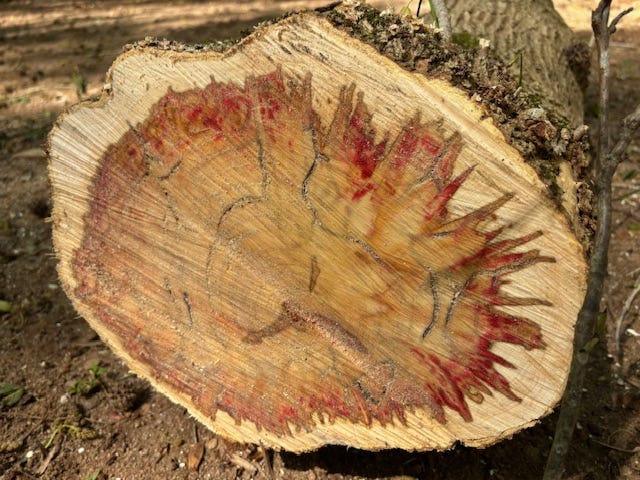

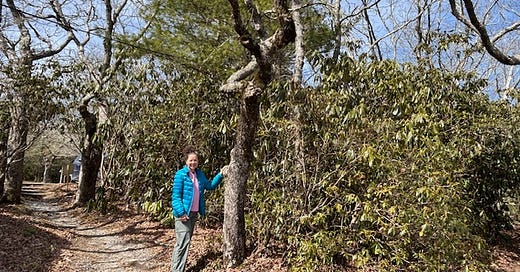


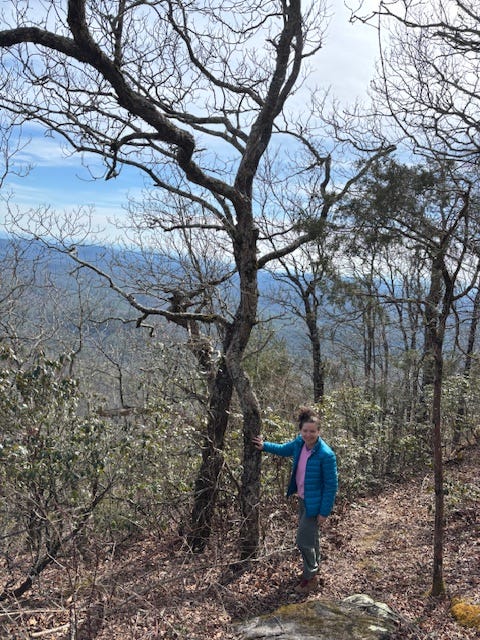
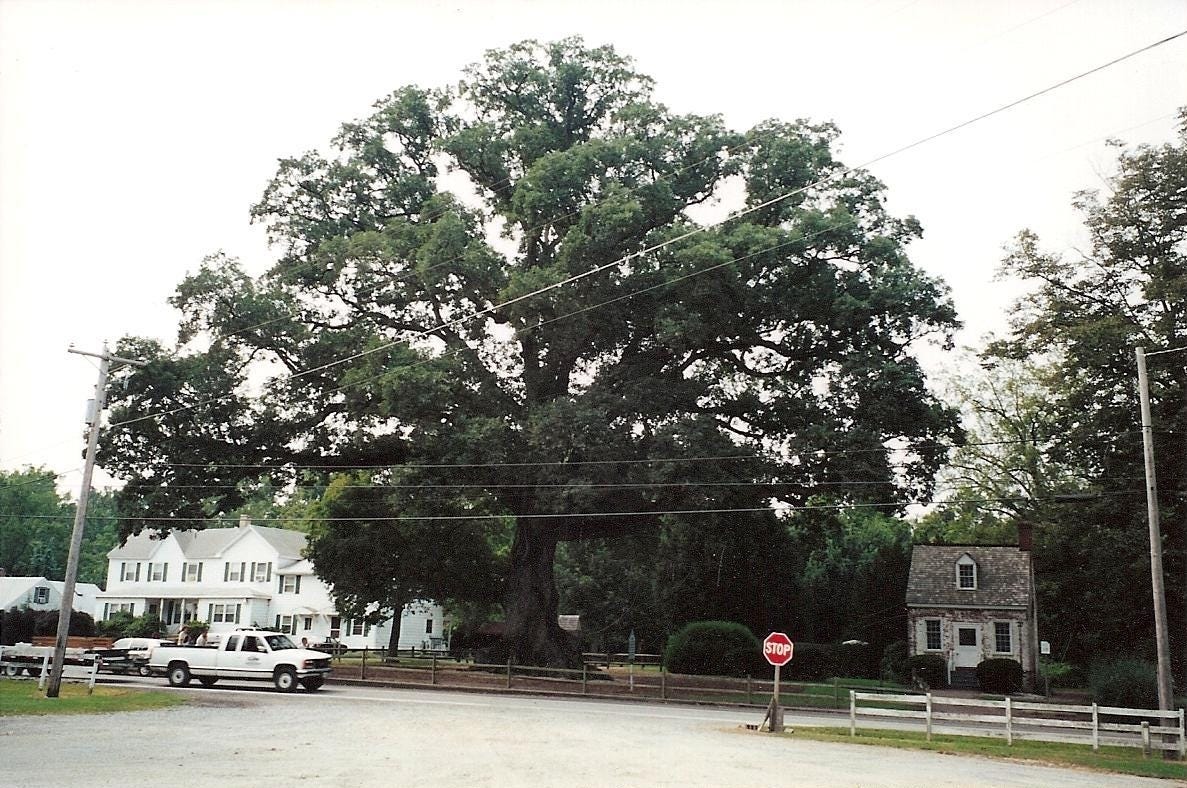


Your tribute was wonderful. Heartfelt condolences.
In some of the very nutrient poor swamps of the Florida coastal plains there are cypress trees hundreds of years old but trunks only 4-5 inches in diameter. And as for age at modest size, it’s hard to beat bristlecone pines. Good to hear about your white oak example. On a bit of a sly note, size and age aren’t correlated in people either. At least not in adulthood.